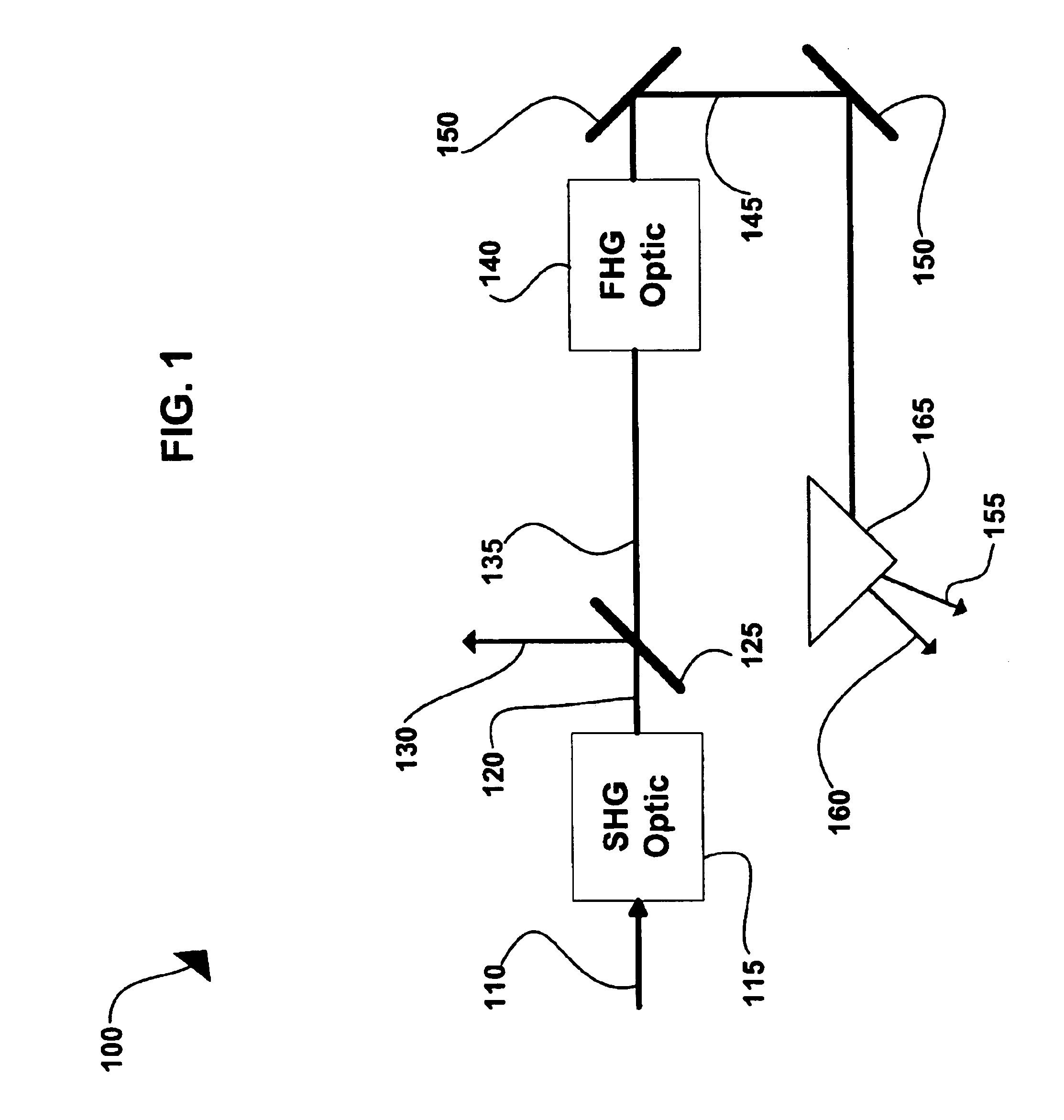Solid state system and method for generating ultraviolet light
a solid state system and laser light technology, applied in the direction of laser details, instruments, active medium materials, etc., can solve the problems of poor beam quality, poor power stability, toxic gas use, etc., and achieve the effect of shortening the operational life and increasing the average energy
- Summary
- Abstract
- Description
- Claims
- Application Information
AI Technical Summary
Benefits of technology
Problems solved by technology
Method used
Image
Examples
Embodiment Construction
[0035]The present invention includes the combination of a harmonic generation system with a tunable Ti:Sapphire pump system. As disclosed herein, this combination results in several unique and unforeseen advantages.
[0036]FIG. 1 shows a typical harmonic generation scheme, generally designated 100. An input light beam 110 is directed through a second harmonic generation optic (SHG) 115 that includes a birefringent crystal such as Lithium Niobate (LBO), Potassium Dihydrogen Phosphate (KDP), Barium Borate (BBO), or the like. When input light beam 110 is directed through SHG 115, a well known non-linear process causes generation of photons at exactly twice the frequency (half the wavelength) of the input photons. An output beam 120 of the SHG optic 115, therefore, includes light of the original wavelength λ and second harmonic light at λ / 2. This beam 120 is directed at a dichroic optic 125 that passes the λ / 2 light resulting in beam 135 and reflects the remaining light of original wavele...
PUM
| Property | Measurement | Unit |
|---|---|---|
| average power | aaaaa | aaaaa |
| wavelengths | aaaaa | aaaaa |
| wavelengths | aaaaa | aaaaa |
Abstract
Description
Claims
Application Information
 Login to View More
Login to View More - R&D
- Intellectual Property
- Life Sciences
- Materials
- Tech Scout
- Unparalleled Data Quality
- Higher Quality Content
- 60% Fewer Hallucinations
Browse by: Latest US Patents, China's latest patents, Technical Efficacy Thesaurus, Application Domain, Technology Topic, Popular Technical Reports.
© 2025 PatSnap. All rights reserved.Legal|Privacy policy|Modern Slavery Act Transparency Statement|Sitemap|About US| Contact US: help@patsnap.com



